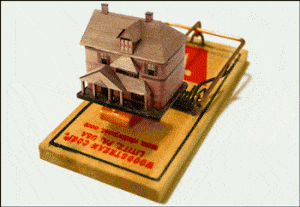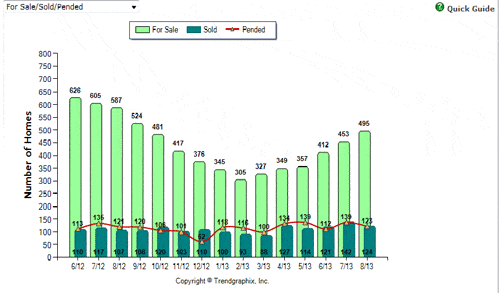
Don’t be duped by mortgage fraud. Here are a few common scams and the red flags you should look for in a transaction.
Mortgage fraud is pervasive: An estimated $4 billion to $6 billion in annual losses result from mortgage fraud, according to FBI reports. “An entire community can be damaged by mortgage fraud,” says Rachel Dollar, a lawyer from Santa Rosa, Calif., and editor of the Mortgage Fraud Blog. Mortgage fraud can lead to a spike in foreclosures, home values plummeting, and lenders raising their rates and fees to recover losses.
The crimes are often complex, involving several parties and occurring over multiple transactions. To protect you and your clients, educate yourself about mortgage fraud and be on guard for any warning signs in a transaction. You can start by reviewing these five scams, and then test your knowledge by taking our Mortgage Fraud Quiz.
1. The Foreclosure Rescue Scheme
The Scam: “Rescuers” promise cash-strapped home owners that they can save their home from foreclosure. The rescue, which involves paying upfront fees, can take multiple forms, such as the perpetrator obtaining a new loan on behalf of the owner or by having the owner sign over the home’s deed and then rent the home until they can repurchase it. Eventually, the home owner loses the home, either to foreclosure or the fictitious rescue company.
Red Flags: With foreclosure rescue programs, borrowers are often advised to sign over the title of their house to a third party, become renters of their home, not contact their lender, or send mortgage payments to a third party, according to Fannie Mae, which provides fact sheets on mortgage fraud.
2. Loan Documentation Fraud
The Scam: This fraud involves numerous schemes in which a borrower provides inaccurate financial information — such as about their income, assets, and liabilities — or employment status in order to qualify for a loan with lower rates and more favorable terms. Occupancy fraud is one growing area: Borrowers say they plan to live in the property when they actually intend to rent it.
Red Flags: Documentation may raise suspicion if the employer’s address is shown as a post office box, accumulation of assets compared to the person’s income appears too high or low, the new house is too small to accommodate occupants, the person has no credit history, or the application is unsigned or undated, according to Fannie Mae.
3. Appraisal Fraud
The Scam: A faulty appraisal — saying a property is worth more than what it really is — is connected to many types of mortgage fraud. It entails manipulating or overstating comparables, market values, or property characteristics in order to obtain a higher appraisal. The higher property appraisal, which generates false equity, is done by falsifying an appraisal document or using an appraiser accomplice to obtain the higher value.
Red Flags: Be skeptical of appraisals that are dated prior to the sales contract, list comparable sales that do not contain similarities to the property or are outside the neighborhood, the owner is not the seller listed on the contract or the title, or a third party participating in the transaction orders the appraisal, Freddie Mac warns.
4. Illegal Property Flipping
The Scam: This entails purchasing properties and reselling them at inflated prices. These scams usually involve faulty appraisals and inaccurate loan documents. The property is then refinanced or resold immediately after purchase for an inflated value. The home is purchased at a higher price, often by straw buyers working with the “flipper,” and eventually falls into foreclosure.
Red Flags: Some key things to look for are rapid refinancing of a property; the seller recently having acquired the title or acquiring the title concurrent with the transaction; an appraisal that comes in too high; a property that was recently in foreclosure being purchased at a much lower price than its sales price; or the owner listed on the appraisal and title not matching the seller on the sales contract, according to Fannie Mae.
5. Short Sales Schemes
The Scam: Borrowers owe more than the current value of their home so they fake financial hardship and no longer make their mortgage payments. An accomplice of the borrower then submits a low offer to purchase the property in a short sale agreement. The lender agrees to the short sale, unaware that it was premeditated. The property, after being purchased at the reduced price, is then often resold at the home’s actual value for profit.
Red Flags: The borrower suddenly defaults on the mortgage with no workout discussions with the lender, an immediate offer is made to a lender at a short sale price, the short sale offer is less than current market value, or a cash back is offered at closing to the delinquent borrower (disguised as “repairs” or other payouts, for example) and is not disclosed to the lender, according to Fannie Mae.
You can report instances of suspected mortgage fraud to Stopfraud.gov.
Related articles
Please help to keep this blog going
Let us Sell or help you buy your new home or land
John J. O’Dell Realtor® GRI
O’Dell Realty
(530) 263-1091
Email John
BRE#00669941


































